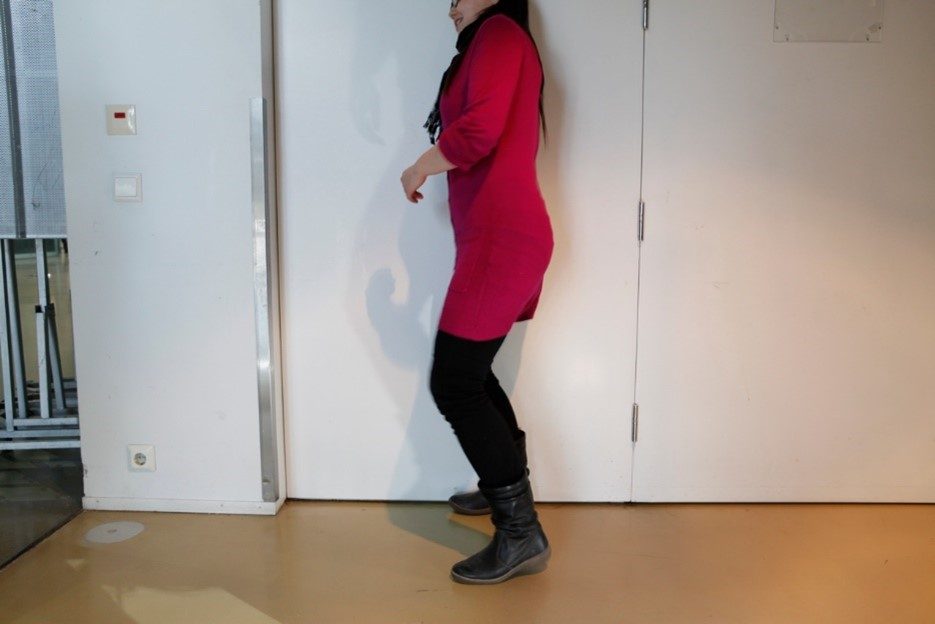Håller du balansen?
Steg 1: Ställ dig att stå med sidan mot väggen, med ena axeln och foten tätt mot väggen.

Steg 2: Försök nu lyfta på andra foten, d.v.s. den som inte är tätt mot väggen.

Vad hände?
Det är omöjligt lyfta på foten utan att falla. Foten som är tätt mot väggen kan inte ha hela kraften och massan på sig utan att ändra position. Du märker detta om du står fritt och lyfter ena benet. Din tyngdpunkt förändras. När du står mot väggen och försöker flytta din tyngdpunkt, låter inte väggen dig göra det. Den är i vägen för en tyngdpunktsförändring som gör att du står lite snett.
Tyngdpunkten bestäms av kroppens form och av dess massa. Då mänskan står upprätt är hennes tyngdpunkt någonstans i mitten av magen. Du kan upprätthålla din balans med alla dina kroppsdelar liksom armar och ben, genom att röra på dem. Du behöver en stödyta till exempel fötterna då vi står i upprätt position, (eller på dina händer om du står på händer), för att hållas i balans. Tyngdpunktens lodräta projektion, (dvs det ställe ovanför vilken tyngdpunkten befinner sig) bör hamna innanför stödytan för att man skall hålla balansen (eller någonstans mellan stödytorna ifall de är flera, tex när man står på två ben).
Idé tagen från Heurekas Experimentfabrik
